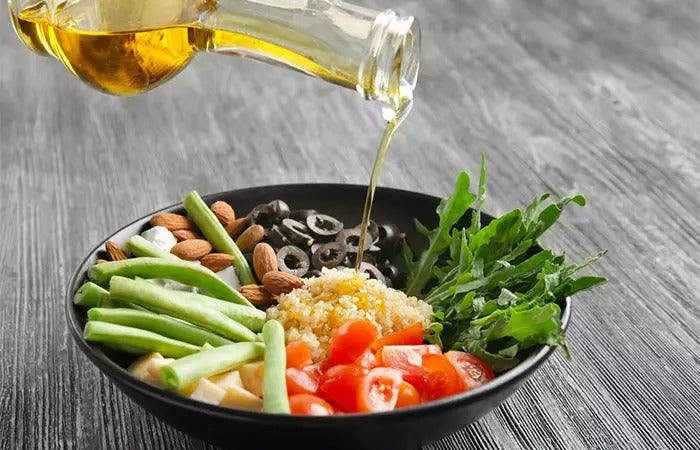Soybean oil is a widely used cooking oil in kitchens and restaurants around the world. Understanding its smoke point is crucial for cooks, especially for those who are keen on frying or high-temperature cooking. In this comprehensive guide, we will cover everything there is to know about the smoke point of soybean oil, its importance, and how to use this knowledge to enhance your culinary skills.

What Exactly is a Smoke Point?
Before diving into the specifics of soybean oil, its essential to understand what a smoke point is. The smoke point of an oil is the temperature at which it starts to produce visible smoke. Once an oil reaches this temperature, it begins to break down and release harmful compounds and free radicals, which can be detrimental to your health and the flavor of your food.
The smoke point is a critical factor to consider in cooking because it determines which oils are suitable for particular cooking methods such as frying, sauting, or baking.

The Specifics of Soybean Oil's Smoke Point
Soybean oil boasts a moderately high smoke point compared to other cooking oils. Generally, the smoke point of refined soybean oil ranges between 450F to 495F (230C to 257C). This makes it an excellent choice for high-heat cooking techniques like frying and deep-frying. On the other hand, unrefined soybean oil has a lower smoke point, around 320F (160C), and is better suited for salad dressings or low-heat cooking.
The Differences Between Refined and Unrefined Soybean Oil
Choosing between refined and unrefined soybean oil boils down to your intended use. Refined oils have been processed to remove impurities, giving them higher smoke points and longer shelf lives. Unrefined oils retain more of their natural flavors and nutrients but have lower smoke points and shorter shelf lives.

Health Implications of Cooking Oil Smoke Points
Cooking with oils that have surpassed their smoke point can be hazardous. Not only does this process produce free radicals, but it also releases acrolein, a compound that creates a burnt flavor and potential respiratory irritant. Being aware of the smoke points of the oils you use, including soybean oil, ensures you can cook delicious and healthy meals.
Nutritional Benefits of Soybean Oil
Soybean oil isnt just about its smoke point; its also packed with nutritional benefits. It contains a balance of omega-3 and omega-6 fatty acids, which are essential for heart health. Additionally, soybean oil is rich in vitamin K, which plays a crucial role in bone health, and it contains vitamin E, an antioxidant that helps protect cells from damage. For more information on the nutritional benefits of soybean oil, read this informative article.

How to Store Soybean Oil
Properly storing your soybean oil can help maintain its quality and prolong its shelf life. Keep it in a cool, dark place away from direct sunlight. Make sure to seal the bottle tightly after each use to prevent oxidation. If stored correctly, refined soybean oil can last for up to a year, while unrefined soybean oil should be used within six months. Learn more about how to store oils effectively.
Best Practices in Cooking with Soybean Oil
Here are some expert tips for using soybean oil effectively:
- Use refined soybean oil for frying, searing, and other high-heat methods.
- Reserve unrefined soybean oil for dressings, marinades, and low-heat cooking.
- Monitor the oils temperature using a thermometer to avoid exceeding the smoke point.
- Combine soybean oil with other high-smoke-point oils for versatile cooking applications.
Looking for more cooking tips? Check out our cooking tips section.
Frequently Asked Questions
What makes soybean oil good for high-heat cooking?
The high smoke point of refined soybean oil, which ranges between 450F to 495F, makes it suitable for high-heat cooking methods like frying and deep-frying. This ensures minimal production of harmful compounds and preserves the flavor of your food. Learn more about high-heat cooking oils.
How does the smoke point of soybean oil compare to other oils?
Soybean oil has a higher smoke point compared to many other commonly used oils like olive oil (smoke point: 374F to 405F) and unrefined canola oil (smoke point: 225F). However, its slightly lower than oils like avocado oil (smoke point: 520F) and safflower oil (smoke point: 510F). For detailed comparisons, visit this guide on oil smoke points.
What are some other oils that have high smoke points?
Other oils with high smoke points include avocado oil, grapeseed oil, sunflower oil, and refined canola oil. These oils are excellent for high-temperature cooking methods and provide healthy alternatives to commonly used cooking oils.
By understanding the smoke point of soybean oil, you can elevate your cooking game, ensuring every meal is both delicious and healthy. For more in-depth information and health tips, you can visit Healthline.
As an Amazon Associate, I earn from qualifying purchases.






Leave a comment
This site is protected by hCaptcha and the hCaptcha Privacy Policy and Terms of Service apply.